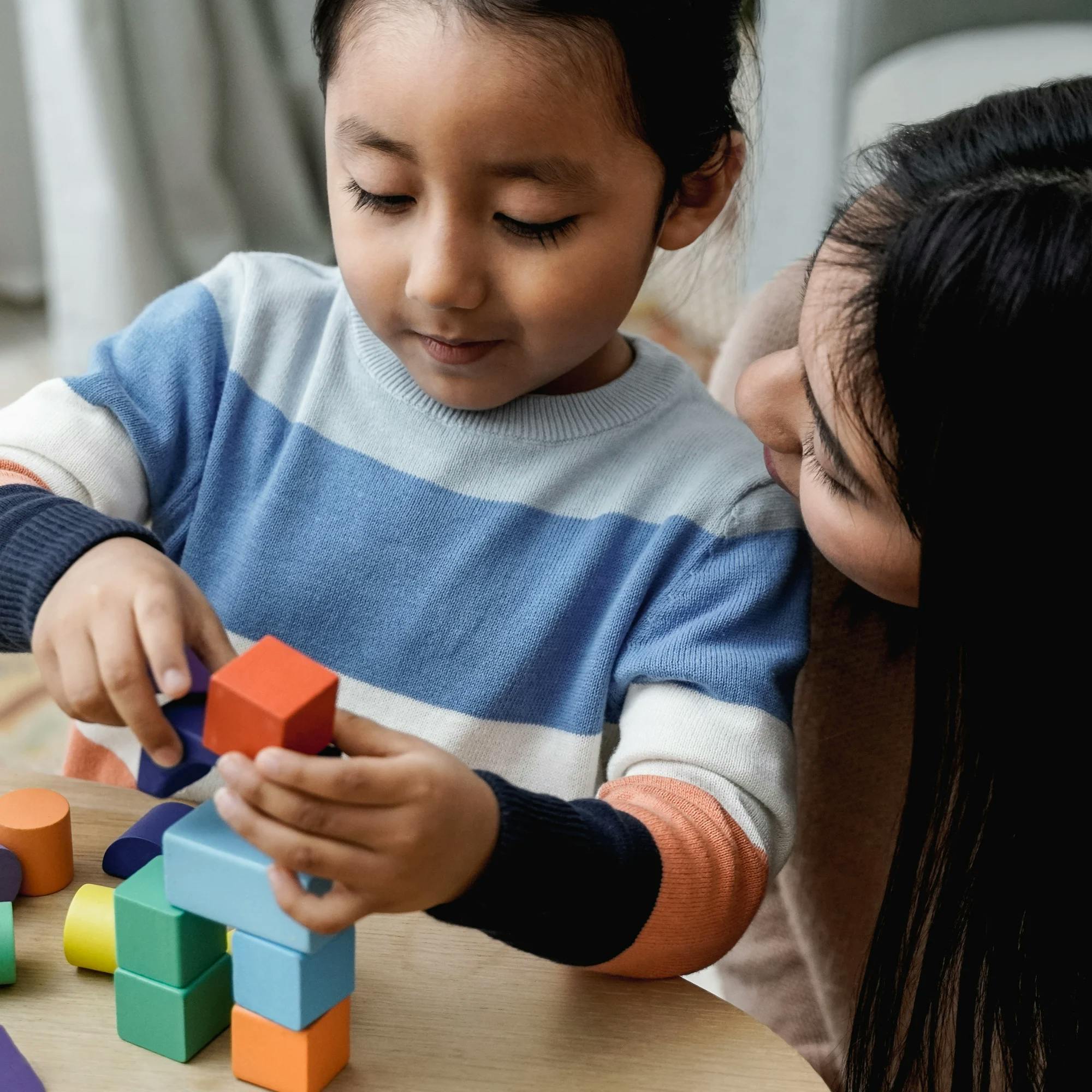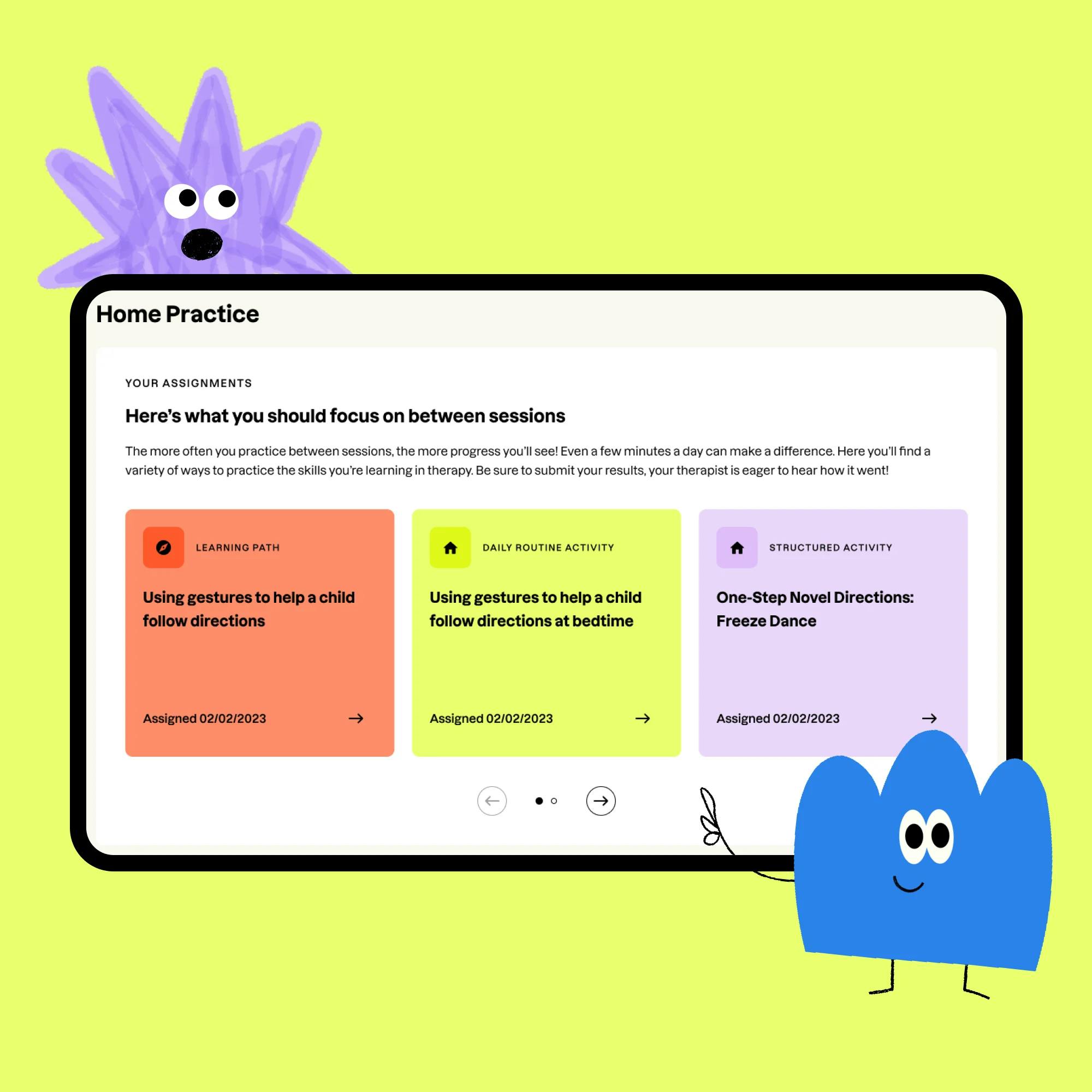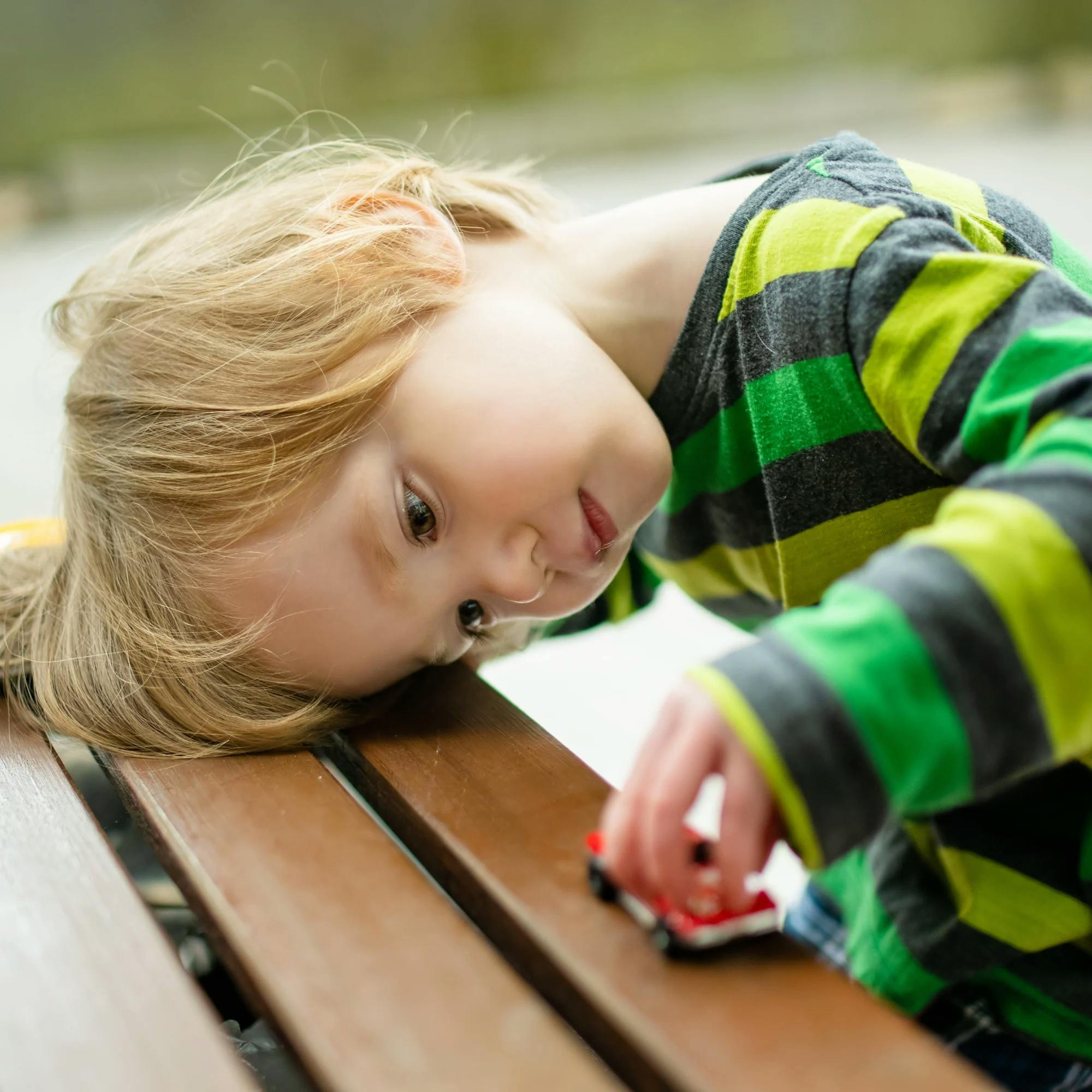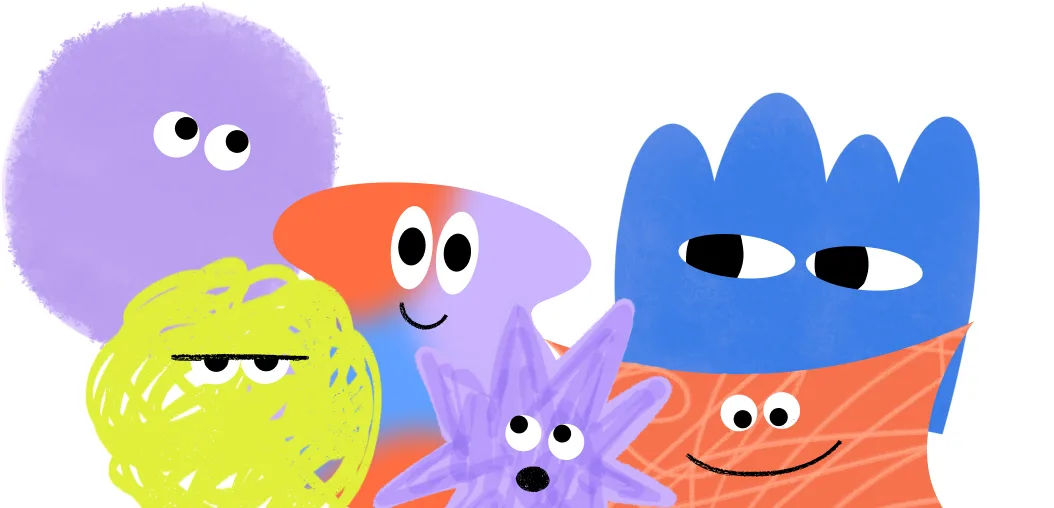
Gestalt Language Processing Explained: Stages, Signs, and Support Strategies for Parents

Children’s language development never follows one path. Some children start speaking by learning single words and building them into sentences. Others may mimic scripts, or chunks of language, they hear before breaking them down into their individual parts. This is called gestalt language processing, and it’s one way children grow in their language skills. If this description fits your child, you’re in the right place to learn more about GLP, including when to consult a speech therapist.
As caregivers, we know that children communicate with us in many different ways. And when they’re developing language, we’re the ones who understand every tone, word, and sentence (or try to!)—even when others might not. This is part of what makes caregiving so special. So, it might surprise you to learn that what you thought was a certain type of communication difference has a name: gestalt language processing (GLP).
This term refers to the way many children first learn language, by copying “language scripts” from TV, movies, or other people. It’s only later that they start breaking these scripts down and using individual words.
If a clinician or teacher has mentioned that your child uses GLP—or you’ve heard about it on social media—you probably want to know what it means, how it differs from other types of language development, and practical ways to support your child at home. We have those (reassuring) answers for you right here. Keep reading.
Curious or concerned?
Our free screener is tailored by age and covers all areas of speech, language, and feeding. Find out if your child might need speech therapy.
 Screener for children
Screener for childrenHow to use this guide
Children don’t all learn the same—and that goes for language development, too. You can use this guide to:
Skim common GLP stages to learn more about where your child falls in their use of language.
Pick two or three support strategies you can use at home with your child and/or their speech therapist. You all are a team here!
Track phrases and scripts your child uses to share with their speech therapist.
Refine at-home strategies to support where your child is now and foster an environment where they can grow.
Gestalt language processing: What it is
What is gestalt language processing? Children develop language in different ways, including gestalt language processing and analytic language development, says Emilie Naidoff, MA, CCC-SLP, a licensed speech-language pathologist at Expressable. Understanding each of these can provide some helpful insight into where your child falls. Here’s how Naidoff describes each to caregivers:
Gestalt language processing (GLP)
Children start communicating by processing language in bigger chunks or phrases they’ve heard before, instead of beginning with individual words. Over time, the child breaks down these larger chunks into smaller, more individualized words and meanings. From there, they learn to put these words together into longer, more complex sentences.
Example: A GLP learner might say “Let’s Blaze!” (from Blaze and the Monster Machines) when they want to go somewhere. The language sounds like a script.
Analytic language development (ALD)
Children learn language by starting with smaller units, such as single words. They gradually combine them to form phrases and sentences.
Example: An analytic learner might say “go” when they want to leave the house. They learn individual words first, then develop language skills to say phrases like “Let’s go out.”
It’s important to remember, says Naidoff, that children’s brains process language differently. This is OK and normal. “There isn’t just one way that children learn to talk,” she says.

Gestalt language processing stages
GLP is recognized as a “distinct and natural style of developing language,” according to clinicians with the American Speech-Language-Hearing Association (ASHA). There are six recognized stages of GLP, noted below. Keep in mind that not all children will follow this exact pattern since they are all unique learners. There is also no "fixed" timeline of how quickly children move through the stages.
Stage 1: Whole language gestalts, such as scripts, songs, and whole phrases.
Stage 2: Mitigation, which is when gestalts are segmented into shorter phrases or pieces of scripts are mixed and matched.
Stage 3: Single words, where words are pulled out of gestalts. May also use two-word combinations to describe a single word, such as “bus + school” to describe “bus.”
Stage 4: Creates original phrases and beginning sentences: “The bus is coming.”
Stage 5: Original sentences with more complex grammar.
Stage 6: Original sentences using complete grammar.
The connection between gestalt language processing and autism
Importantly, using GLP does not mean a child is autistic. “Gestalt language processing is seen in both neurotypical and neurodivergent people,” says Naidoff. Neurodivergence can include those with autism spectrum disorder, attention deficit hyperactivity disorder (ADHD), Down syndrome, among many others.
GLP has long been associated with autistic learning. One reason is that autistic children often use echolalia, a term that describes when a child repeats a word or phrase they previously heard. “These can sound like movie lines, phrases from songs, or things they’ve heard others say,” says Naidoff. Echolalia is one feature of GLP. So while the two terms are related, they are not the same.
As a caregiver, if you hear your child use these phrases, you might worry and think you need to correct them, “but echolalia is actually a meaningful and important part of language growth for many children,” Naidoff says. “It’s how some children first begin to use language to connect, express feelings, or share experiences.”


Signs your child may be a gestalt language processor
Knowing if your child might be a GLP user allows you to step in and support their learning and development. Here are signs to look for, according to Naidoff:
Copying long scripts (chunks of language) from TV or movies.
Example: If they’re feeling scared, they might say “just keep swimming” from Finding Nemo.
Speaking in sing-song patterns, or a pattern that mimics the same tone they heard.
Example: Your child might say “goodbye my friend,” which their grandfather uses to say bye to them. Your child may repeat that when they want to say goodbye.
Using unintelligible strings of language, which can also be referred to as “jargon” or “gibberish.” It’s not!
Example: “Iliketoeateateatapplesandbananas” may be used to signal they’re hungry. As a caregiver, you might pick up on this and know what it means, while those on the outside might hear it as gibberish.

What parents can do right now (home strategies)
There are many ways you can support your child at home. The goal is to honor the way they communicate and work with their strengths, preferences, and motivations. This is about strengthening communication—not outright stopping scripts or echolalia. You want to meet your child where they’re at and focus on the intent and meaning of their scripts, rather than pursuing “correct” speech.
“It’s important for caregivers to understand that gestalt language processing is a normal, natural process. It’s meant to be supported, not fixed,” says Naidoff.
Also, keep in mind that asking a GLP user too many questions can overwhelm them. Instead, to encourage language development and communication, here are 6 strategies Naidoff recommends:
1 Listen and affirm
If your child is using a new string of language and you don’t know what it means, all you have to do is listen to and validate them. “Smile, nod, or repeat what they said in a warm, affirming way,” Naidoff says.
2 Be a detective
“Rather than trying to stop echolalia, we want to understand what those phrases mean to the child and build on them,” Naidoff says. Look for clues: When do they use it, what’s happening around them, and what are they feeling at the moment?
3 Describe what’s happening
Rather than asking your child questions about what they’re saying, simply narrate what’s happening and make comments, such as “We’re making lunch together! Now I’m cutting up your sandwich.
4 Pause to let them process
It’s OK to stop speaking or narrating. Using a pause can often help your child decide what language they want to use.
5 Join their play
“Gestalt language processors learn best through natural, child-led interactions, especially when they’re doing something they love,” says Naidoff. When you’re following your child’s lead, the way you’re using language is more likely to stick with them.
6 Create a “script bank” of phrases for your child
As a caregiver, you can model language for your child to use. These should be simple phrases like “let’s go,” “time to go,” or “I like that.”

AAC and gestalt language processing
Children (and adults alike) can communicate with far more than speech. AAC stands for augmentative and alternative communication. According to ASHA, there are a couple types of AAC:
No-tech and low-tech, such as gestures, facial expressions, writing, drawing, and pointing
High-tech, such as using an app on a tablet or a computer with a voice
It’s important to remember that these tools enable the person to communicate. In fact, they have been shown to enhance verbal communication, not delay it.
If AAC is right for your child, a speech therapist can evaluate their capabilities and recommend the AAC tools that will be most useful for them. They can teach you how to use the tools, make them part of your daily routine, and individualize them to your child. For example, you might add your child’s scripts into the AAC device, change the sound of the voice from the device to be more “sing-songy,” and more.


Talking to your child’s teacher and advocating for support
Your child’s teachers are valuable partners in their language development. “Collaborate with teachers, caregivers, or anyone who knows your child well,” says Naidoff. If they are having difficulty communicating with your child, ask them what scripts your child is using and the context they’re using them in. This can often help everyone understand what your child is saying.
Make sure teachers know that questioning a child who uses GLP can be overwhelming for them. “They might not yet have the flexible language to respond,” says Naidoff.
When speaking to your child’s educators, you can also suggest a script bank of model phrases that can be used both inside and outside the classroom for your child. The teachers can use them at school, and you can use them with your child during daily routines at home.
It’s also valuable to have regular check-ins where you can share progress at home and at school. This can help you adjust the model scripts you’re using in order to build on language and continue progressing.


Supplies for families
These supplies and tools can help you work on language development at home with your child:
Visual supports, such as core boards, communication boards, flip books, and picture cards. These look like print versions of what you might see on a tablet. They include squares of words with pictures (like a smiley face for “happy”) or phrases (like an image of a child playing for “let’s play”) that children can point to to communicate. Visual supports can be homemade, or you can find lots of options on Etsy.
Notebook (or app) to write down scripts, context, and new mitigations (when scripts are broken down or segmented)
Apps for a tablet to support high-tech AAC
When to seek a speech-language evaluation
Even though gestalt speech is a normal, natural way many children begin talking, seeking out an evaluation from a speech therapist is one way to support their communication development. According to Naidoff, caregivers might consider an evaluation if a child is:
Copying chunks of language from TV, movies, YouTube videos, or songs
Speaking in sing-song patterns
Picking up on tone, rhythm, and feeling before focusing on the actual words
Using unintelligible strings of speech
Both you and your child will attend the evaluation. In addition to assessing your child, the speech therapist will talk with you and ask what you see in your child’s communication. It can be helpful to give the therapist an audio or video recording of your child, so they can analyze their speech patterns and identify features of GLP like sing-songy phrases. “Collaboration with caregivers is essential in developing a thorough understanding of the child’s language patterns and supporting meaningful communication growth,” says Naidoff.
Looking for a speech therapist?
Get started nowGestalt speech therapy: What sessions often look like
Speech therapy for GLP takes the approach that you as a caregiver use at home: “Sessions should be individualized and child-led,” says Naidoff. Play-based speech therapy creates a connection between the speech therapist and your child. It centers your child, adapting to their learning style and interests.
“When we create this type of space, we can understand the child’s needs and model language based on what is meaningful to them,” says Naidoff. Otherwise, your child may not be interested or engaged at all, and that is counterproductive.
Caregivers can work together with the speech therapist during intake and initial sessions, discussing:
Your child’s interests
Your child’s environment (where is their language coming from?)
The situation and emotion behind gestalts, which can bring understanding into what your child is communicating.
Working with a speech therapist
Taking a team approach to your child’s language development can help them make progress between sessions. Talk to your speech therapist about how you can partner up. Here are some examples of what that might look like:
Keep a record. Keep a notebook with examples of the scripts your child uses. Taking short video or audio recordings can also provide clues, such as the situations in which your child uses scripts or what their voice sounds like when they do.
Talk about goals. It’s not about stopping gestalts. Ask your speech therapist what progress will look (and sound) like for your child. In what ways is this measured? How can you check in with each other to assess progress?
Find out how to practice. Your speech therapist should teach you how to help your child develop their communication skills at home. Talk about language you can model and easy ways to practice during everyday routines.


Myths vs. facts about gestalt language processing
Unfortunately, there are many myths surrounding GLP. These are the three we hear most often:
Myth: Echolalia is meaningless.
Fact: “Echolalia is a natural, beautiful stage of language development, and it’s something we can work with to support meaningful communication,” says Naidoff.
Myth: To help your child communicate, teach them single words first.
Fact: Doing this before they’re ready can set their language development back. Meet your child where they’re at. Follow their lead: Their meaningful phrases can be the best entry point to communication.
Myth: Scripts should be eliminated.
Fact: Scripts (or chunks of language) are one of the stages of GLP. It is a natural part of a gestalt language processor’s language development. As a caregiver, it’s our job to learn what these scripts mean to the child and build from there to support communication–so your child can eventually create their own sentences.
Frequently asked questions
What is an example of a gestalt language?
Children mimic scripts, or long chunks of language. One example could be saying “to infinity and beyond” when they’re ready to leave the house.
Is GLP effective for children with autism?
Autistic children may use gestalt language processing (GLP) as a form of communication; however, GLP is not a speech language therapy that is taught by professionals. Rather, when a child uses GLP, speech therapists and caregivers work together to support them and help them further develop their communication skills.
What are the 6 stages of gestalt language processing?
The six stages are as follows: 1) whole language gestalts, such as songs or whole phrases, 2) mitigation, as gestalts are broken down, 3) single words or two-word phrases that are pulled out of gestalts, 4) original phrases and beginning sentences, 5) more complex original sentences, 6) original sentences with complete grammar.
How do you tell if a child is a gestalt language learner?
Some signs that your child is a gestalt language processor is that they speak in scripts (larger chunks of language), use sing-songy intonation, or repeat unintelligible strings of words.
How do you teach a child with gestalt language processing?
Play-based, child-led speech therapy can help guide your child in their language development skills. Parents can listen intently, work on learning the meaning of common phrases their child uses, and model language for their child to use.
There is no one way to develop language. Some children develop language through gestalt language processing. GLP is when a child starts talking by using chunks of language, and then deconstructs them into individual words, building back up into original sentences. This is a natural, normal part of the language development process for some children.
Support from caregivers can help children build language skills. Partnering with a licensed speech therapist like one at Expressable can help your child grow their communication skills from home, in the environment where they learn best.
Glossary
Gestalt language processing (GLP): A form of language development where the child starts by using whole chunks of language and gradually deconstructs them into smaller parts and individual words.
Analytic language development (ALD): A form of language development where the child begins by focusing on smaller language units, or single words, and builds up their language in a systematic, structured manner.
Echolalia: The repetition of expressive language one hears, either immediately or delayed by minutes or years.
Scripts: Large chunks of language. Also may be called gestalts.
How Expressable Can Help
Concerned your child isn't reaching age-expected milestones? Looking for communication support from a professional? Expressable is a national online speech therapy practice serving children and adults. We treat all major areas of communication and feeding, offer flexible hours including evenings and weekends, and accept most major health insurance plans. We’re proud to have earned more than 3,000 5-star reviews from our clients (4.9/5 average).
Our therapy model is centered on parent and caregiver involvement. Research proves that empowering caregivers to participate in their loved one’s therapy leads to better outcomes. That’s why we combine live, 1-on-1 speech therapy with personalized education and home practice activities for faster progress.
Communication is more than words. It’s how we share how we feel and show who we are. We’re here to help you or your child do just that.








